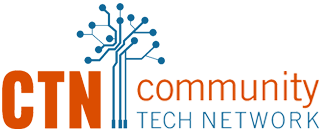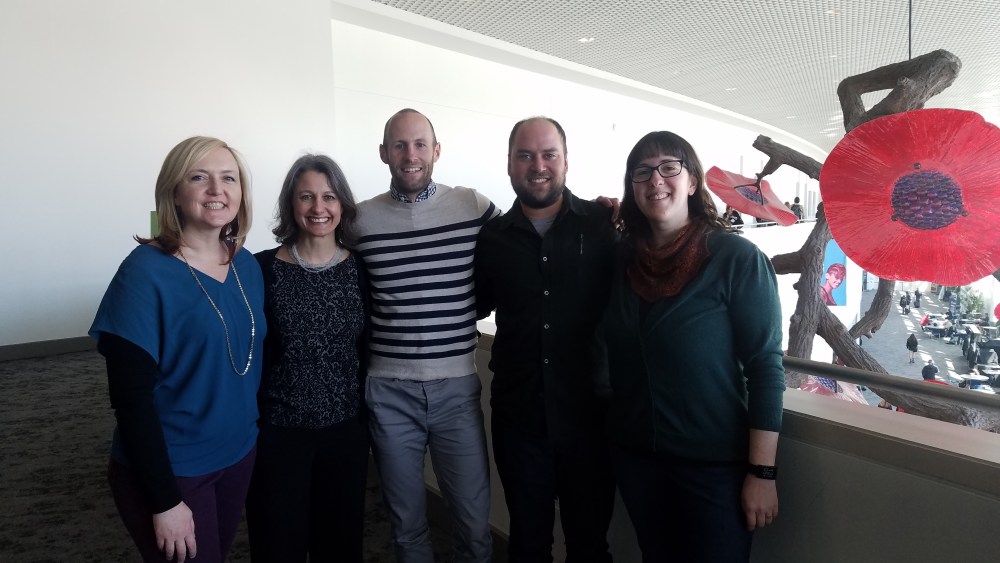For any nonprofit organization with volunteers, how it interacts with them is always a top priority. Nonprofits will devote a large amount of resources to ensure that their volunteers are the “secret sauce,” as so many of ours are at CTN.
The number of volunteers for any organization will vary based on scope and mission, but it is common for even small- to medium-sized organizations to have a medium to large number of volunteers. So the question becomes, how do we train our volunteers? And how do we continue to support them so that they too can be the secret sauce of what we do? There are many directions any nonprofit can go with its resources and capacity. One of those directions is virtual training.
At the Nonprofit Technology Conference (NTC), CTN hosted a panel to discuss how virtual training can be used to train volunteers on everything they need to be successful. Because, as we all know, technology is a wonderful tool, but it is just that, one tool amongst many so that we can attain the vision for which we are striving. Our panel, “Adventures in Developing a Virtual Training Program,” focused on what tools are out there and our experiences using them, including their benefits and challenges.
The panel, led by CTN’s executive director Kami Griffiths, included
- Jesse Bisignano of SamaSchool, an organization that focuses on teaching individuals the skills they need to be successful in the gig economy
- Amber Carroll of Covia Community Service, which works with connecting and engaging older adults with their peers over phone calls
- Liza Dyer of Multnomah County Library, who uses virtual training in many different ways to train and keep in touch with their over 2,000 yearly volunteers
- Me, Eric Babb, a former high school and college-age math teacher who is learning the ropes of what does and does not transfer into adult instruction from teaching ninth-graders what a variable is
During the course of the panel, each of us shared our experience using certain tools for training volunteers or learners. Here are some highlights of what we shared, and in my case, what I learned while on the panel.
Learning Management System (LMS): The backbone of any virtual training program, the LMS you choose provides the structure for how you will engage your volunteers or learners. Both CTN and SamaSchool use TalentLMS. This LMS is fairly user-friendly and allows for certain features of the curriculum, such as audio recording, to be done inside the web-based app.
But it is very important to note, if your LMS is the backbone, it is useless without something to support, and that is where your own skills of instructional design become so important. We don’t have the time or space to go into the details of instructional design, but what can be helpful is to know of a good content authoring tool or three. Fortunately, Jesse from SamaSchool has you covered.
Content Authoring Tool: TalentLMS can do a lot, but it can’t do everything. Want to add text onto your video? Any video editor can help you with that. Want to add a quiz onto your video that pauses until the user answers the question correctly? Hopefully you didn’t skimp on your HTML5 courses or you know about H5P.org. H5P.org is a fully featured, free content authoring tool. Jesse has used this tool for a while for creating all sorts of curriculum for his learners at SamaSchool. Give it a try and see if it’s right for you!
Everything else! There’s too much to go over now, but here is the list of tools we shared at our panel. For whatever tool is right for your organization, always keep your end goal in mind. What do you want your volunteers to be able to do, or do better, at the end of the training? Are you interested in using webinars for your volunteer training? That can be a great option that offers convenience to both you and your potential volunteers. But no one likes to be talked at for two hours, and that problem can compound itself when the person doing the talking, for instance you, is in a little square box on the computer screen. If you want to use webinars for volunteer trainings, great, but keep it engaging. The same activities you use to get your volunteers active and chatty in person should be used, or modified in whatever necessary manner, for your virtual training.
All in all, 19NTC was an amazing experience that offered many fun and educational sessions. If you happen to find yourself in the Baltimore, Maryland, area the last week of March next year, stop by to say hello and share your adventures in developing virtual training.


Comments are closed.